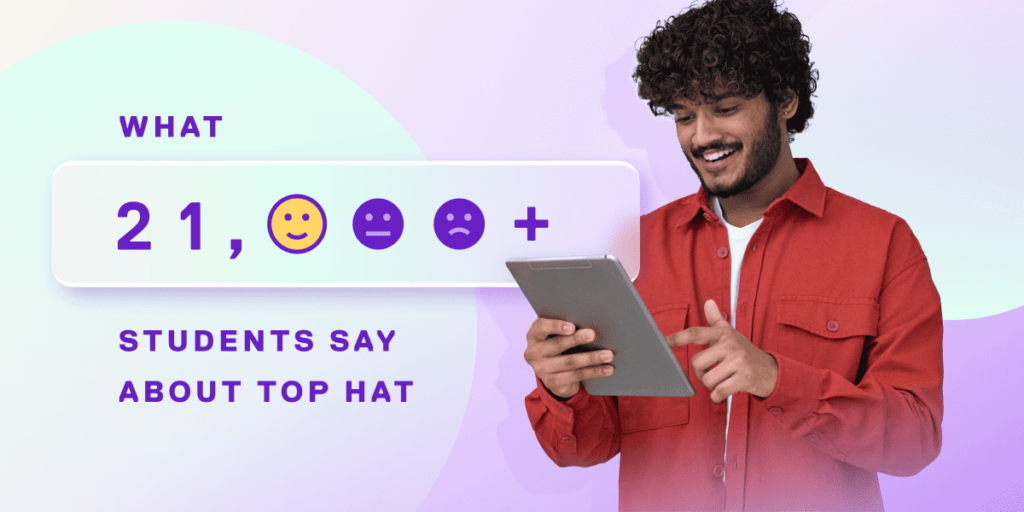Congratulations on completing the spring 2021 semester! As the summer approaches, we hope you can enjoy some well-deserved rest and relaxation. If your fall planning is already creeping up on you, we’re highlighting ten books you’ll want to add to your summer reading list. Whether it’s equity, engagement, collaboration or inclusivity, the ten authors below offer real life lessons and solutions to issues persisting in higher ed.
1. Skim, Dive, Surface: Teaching Digital Reading (2021)
Static PDF readings are so 2020. Why? They aren’t interactive and typically don’t include questions throughout to check comprehension, meaning it’s easier for students to get distracted. In her new book Skim, Dive, Surface, Jenae Cohn, Director, Academic Technology at California State University, offers strategies on how to better frame, scaffold and implement effective digital reading assignments that will motivate students. You’ll leave with neuroscience-backed practices to maintain student attention and help them stay engaged outside of the classroom.
2. Keeping Us Engaged: Student Perspectives (and Research-Based Strategies) on What Works and Why (2021)
No student enjoys hearing, “let’s go around in a circle and share our name, program and a fun fact about ourselves” at the beginning of the semester. But these overused conversation starters aren’t the only tactics you can employ to provide value for students. In her book Keeping Us Engaged, Christine Harrington, Professor of Psychology and Student Success at Middlesex County College, interviews 50 students to get their tips on how to make learning more meaningful. Harrington additionally offers activities grounded in learning science and active learning principles to test in any in-person or online course.
3. Minding Bodies: How Physical Space, Sensation, and Movement Affect Learning (2021)
If you’re heading back to campus this fall, don’t be quick to return to your traditional, pre-COVID ways. In Minding Bodies, Susan Hrach, Director of the Faculty Center and Professor of English at Columbus State University, advocates for physical, sensory-rich learning experiences—ones that engage all five senses. One of Hrach’s ideas? A simple “walk and think” exercise where students take a 20-minute walk to reflect on an assigned prompt before returning to an in-person lecture or Zoom class to complete a journal entry. Hrach draws from cognitive psychology theory to offer low-cost and inclusive strategies to maximize the time spent with students during class time.
4. Brilliance Hacks for Better Work-Life Balance (2021)
This past year, the boundaries between work and play became increasingly blurred. Even as things revert to ‘normal,’ Lindsay Tan, Associate Professor and Interior Design Program Coordinator at Auburn University, advocates for a brilliance mindset that will help you make intentional decisions about where to invest your time, both personally and professionally. In Brilliance Hacks for Better Work-Life Balance, Tan serves up simple tips that can help you achieve your optimal work-life balance in as little as 15 minutes a day—such as a quick check-in with your supervisor to make sure you’re prioritizing the most impactful tasks for tomorrow.
5. Super Courses: The Future of Teaching and Learning (2021)
Your peers across the globe embrace a variety of instructional techniques, strategies and pedagogies to help them reach their full potential. By visiting colleges with inspirational professors as far afield as China and Singapore, Ken Bain, former Provost and Vice-President for Academic Affairs at the University of the District of Columbia, reveals the formula behind ‘super courses.’ These are learning environments that foster intrinsic motivation and promote self-directed learning. In reading Super Courses, you’ll receive countless professor tips for creating energetic, engaging and empowering classrooms along with a sample syllabus that you can use when forming your fall course(s).
6. How Humans Learn: The Science and Stories Behind Effective College Teaching (2018)
How can busy instructors best meet the needs of a new group of students this fall? Josh Eyler, Director of Faculty Development at the University of Mississippi, identifies five scientific inquiry models—curiosity, sociality, emotion, authenticity and failure—to help you better understand the way students process information. How Humans Learn will leave you with strategies to meet students where they’re at. You’ll also get tips on how to balance lecturing with opportunities for application and comprehension.
7. Mindset: Changing The Way You Think to Fulfil Your Potential (2017)
It’s no easy feat teaching during the tail end of a pandemic and then gearing up to switch modalities yet again. But as Stanford psychologist Carol Dweck notes, feeling motivated and achieving your goals is all about mind over matter. In the updated edition of Mindset, Dweck re-defines success by comparing a fixed mindset (the belief that certain characteristics are fixed and can’t change) to a growth mindset (where people believe that with time and effort, they can improve upon a given area). You’ll learn why the right mindset is essential to help you and your students achieve an ideal level of accomplishment, academically and otherwise.
8. The Spark of Learning: Energizing the College Classroom with the Science of Emotion (2016)
Empathy and tapping into students’ emotions can work wonders in any class environment. Sarah Rose Cavanagh, Associate Professor of Psychology at Assumption College, uses her background in psychology and neuroscience to show how educators can prioritize attention, information retention and motivation by creating emotional connections with, and among, students. By reading The Spark of Learning, you’ll get tangible activities and practices—such as creating three different assignment formats to appeal to students—to take with you to the new semester.
9. Deep Work: Rules for Focused Success in a Distracted World (2016)
It’s become increasingly normal for interruptions to arise when working from home—either through self-inflicted means like social media, or tending to your child’s needs. This makes deep work, a state of complete focus on a cognitively demanding task without distraction, nearly impossible. But in Deep Work, Cal Newport, Assistant Professor of Computer Science at Georgetown University, celebrates, rather than condemns, distractions. Newport outlines a rigorous training regimen and offers four rules to implement in your day, such as noticing your habits when it comes to ‘shallow work’ (ie, filling in a spreadsheet or replying to a request via Slack) and then working to contain these tasks as much as possible.
10. Culturally Responsive Teaching and The Brain (2014)
Implicit biases, privilege and stereotypes have always persisted. This fall, accelerate your efforts towards addressing all three. In her debut novel, Culturally Responsive Teaching and The Brain, Zaretta Hammond, Adjunct Instructor of Adolescent Literacy at Saint Mary’s College, highlights how culturally responsive teaching can deepen student learning and engagement. Through checklists, tools, templates and written prompts, you’ll be given the space to self-reflect, helping you create a learning environment that’s representative of every student.
As the fall approaches, make equity and engagement two cornerstones of your next course. Download The Ultimate List of Icebreakers for the College Classroom, packed with 50 easy-to-implement games and activities, to get one step closer.


